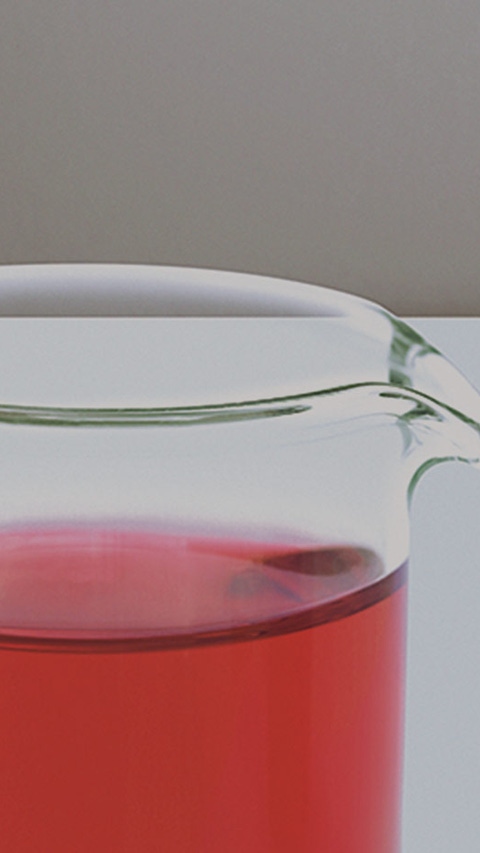Terms such as near-natural
and green cosmetics are not protected by law.
Organic meets high tech
Natural cosmetics, an eco-niche? That is a thing of the past. Now, natural cosmetics means plant-based ingredients, scientific innovations and high growth rates. But is plant-based also the same as organic? And how can sustainability be achieved?
Nature is making its way into millions of bathrooms in a cream jar. More and more consumers consider a sustainable lifestyle important and are also paying closer attention to their skin care in this regard. According to Statista, one of Germany’s leading statistics portals, about two thirds of women questioned worldwide prefer natural ingredients. Half of those who responded think it is important that these ingredients drawn from nature are also vegan. Sustainable care products have developed into an engine for growth. “The market for natural and organic cosmetics is growing almost twice as fast as the cosmetics market overall,” the Statista dossier on natural cosmetics says. And there is no end to the boom in sight. On the contrary, with rising environmental awareness, there is also huge growth in demand. Companies are responding: On the shelves, organic and natural cosmetics are arranged alongside clean beauty products and creams that advertise themselves with vegan ingredients.
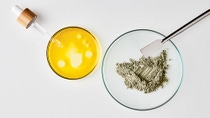
Pomegranate oil and clay are common ingredients in natural cosmetics.
Guaranteed natural?
However, the question of which cosmetics are really natural is far from simple. The problem is that terms such as near natural and green cosmetics are not protected by law and, in some cases, are used very randomly. If you prefer ingredients that are of natural origin, you ought to be guided by seals of quality and certifications. Sea waves, leaves and a sun – these were the symbols used in the world’s first verified natural cosmetics seal. It was developed in 1997 by natural cosmetics manufacturers in Germany, but could not suceed in establishing itself internationally. The most widespread certification system today is the COSMOS standard, created by an association of five European organizations. In Europe and South America, the seal of the international non profit organization NATRUE is also represented, and in North America there is a seal awarded by the Natural Products Association. To sum up, it can be said that only with certified natural cosmetics is there a definition of what is considered natural. All ingredients must have been made on a plant based or inorganic mineral foundation, and they can – although many users do not know this – also be of animal origin. However, this does not mean that cosmetics from nature are necessarily organic. That scope has its own certificates. There, up to 100 percent of the ingredients have to come from a controlled organic cultivation process, and additives like colorings or fragrances must have been produced in an environmentally and resource friendly manner.
Whereas certified natural or organic cosmetics define exactly what ingredients may be contained, clean beauty approaches things from the other direction: Here, it is all about what is not included. Clean beauty manufacturers often leave out ingredients that have attracted criticism, but they do use both natural and synthetic raw materials in their products. The widely used claim “Free from …” can mean many things. For example, one manufacturer will avoid silicones and parabens, another lactose or gluten. Mineral oils and synthetic fragrances are also often taboo.
Everything can be used
Rambu-what? Largely unknown in the Western world, the evergreen rambutan tree has many fans in Asia – its fruit is rich in antioxidants and tastes good. By-products from the tree can also be used sustainably and effectively in cosmetics, as the organically certified BASF Rambutan Program demonstrates.


Leaves:
An extract from the leaves helps to rejuvenate mature skin. Nephoria™ encourages the formation of collagens, among other things.
The result of application tests shows improved skin elasticity and fewer wrinkles.

Shell:
Valuable cosmetic ingredients can also be extracted from the spiky fruit shell. Nephydrat™ supports optimal functioning of the skin barrier and measurably increases skin moisture.

Rind:
The rind contains various compounds with antioxidant properties and is suited for use as an anti-aging ingredient.

Seeds:
Rambutan seeds and fruit are well-known for their effectiveness as destroyers of fat. This can be used for protecting the scalp. Rambuvital™ reduces sebum oxidation and can help with hair loss. The seed extract improves the vitality of hair follicles.
Michelle Wong, a qualified chemist and beauty blogger from Australia, is troubled by the fact that clean beauty still lacks clear standards and that there is a lot of superficial knowledge in circulation. “It is often overlooked that many ingredients are perfectly safe to use in defined quantities and that any ingredient can be harmful when used to excess,” says Wong, who conducts scientifically based examinations of beauty myths on the internet.
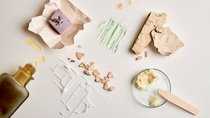
Paper from sugarcane, soap bars, natural oils from olives, or parts of the aloe vera plant – with sustainable cosmetics it is all about packaging and ingredients.
Dedicated clean beauty and natural cosmetics manufacturers agree that there is no place for microplastics in cosmetics – and especially not in the environment. The term microplastics covers solid, insoluble synthetic plastics with a diameter of less than 5 millimeters. In E.U. countries such as Sweden, France and Italy, plastic microbeads used for exfoliation and cleansing are already forbidden. Often, the criticism goes further and includes soluble polymers – which, although they are not plastic, also do not decompose in the environment. Manufacturers are increasingly offering alternatives. These include the biopolymer Hydagen® Clean from BASF. It has an immediate cooling effect, which makes it well suited for eye pads intended to ease swelling. Like all BASF biopolymers, Hydagen Clean is biodegradable and comes entirely from renewable raw materials. It is extracted from the tuber of the konjac plant, which is indigenous to southwestern China.
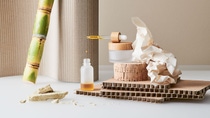
Sustainability is not possible without the right packaging: The options range from glass jars with wooden lids to cork boxes and paper made from sugarcane.
Proven techniques
Humans have always drawn from nature for skin care. In Korea, ingredients from roots, seeds and blossoms have been used for centuries in elaborate beauty rituals. This is a trend that is now becoming known worldwide by the name K-Beauty. One of its representatives is the Korean cosmetics manufacturer Whamisa, which relies on certified natural cosmetics combined with innovative formulations. In his search for more sustainability in the cosmetics sector, Whamisa CEO Ryan Park rediscovered an ancient method: fermentation, the microbial or enzymatic conversion of organic substances into acids, gases or alcohol. “Fermentation is the cycle of life – it is a really attractive method where you do not have to throw anything away,” says Park, who is also head of research at Whamisa. “Harmful bacteria are killed off during the fermentation process, and nutrients that are beneficial for the skin, such as vitamins and minerals, are created at the same time.”
Natural ingredients are especially appealing to consumers in China. In 2020, sales in the natural and organic cosmetics sector there stood at about $2 billion. This places China ahead of North America, which had sales of around $1.3 billion. Next year, China could even surpass the $3 billion barrier.
Our Skin: What holds us together
Our largest and heaviest organ performs vital functions, yet is often underestimated. Here we show what this border guard between our inside and outside does for us.
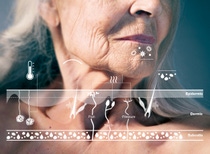
Storage facility
One-quarter of the water stored in the whole body is held, along with fat, in the subcutis.
Protective shield
With its hard skin, the epidermis protects against injuries caused by pressure and friction. It also protects a human being against drying out: Without it, our body would lose liters of water every day through evaporation.
Air conditioning
One meter of the thinnest blood vessels and 100 sweat glands on one square centimeter of skin: these are the tools used especially by the dermis to keep our body temperature constant.
Immune system branch office
With its slightly acidic pH value between 4.7 and 5.75, the epidermis makes it hard for pathogens to penetrate into the body. If that barrier is still crossed, special cells gather up uninvited guests and transport them away.
Feeler
Human skin contains approximately 640,000 receptors in total. These enable us to feel pain, pressure, cold and warmth, with most sensory functions based in the dermis.
Naturally effective
The growing worldwide demand for natural cosmetics and body care has become one of the most important drivers of innovation for the sector – global market forecasts from Premium Beauty Media, for example, predict an average annual growth rate of 5.2 percent to $54.5 billion in sales by 2027. This is also clear to see at BASF Care Creations®. “Our goal is to create formulations that are based on naturally obtained ingredients without any loss in performance,” says Dr. Philippe Moussou, who is in charge of global research and development projects for cosmetic acitve ingredients at BASF. These include highly effective peptides as a natural weapon in the battle against aging skin. These small protein elements can make the skin more resistant and stronger, and even ease silent inflammation that smolders unnoticed in many people’s bodies for a long time.
Moussou and his team used artificial intelligence to find out which of the millions and millions of possible peptide combinations are the most promising. This resulted in the new agent PeptAlde™ 4.0. Its raw material is organically grown rice. “Without artificial intelligence, it would have taken much longer to detect suitable peptides, or we would have depended on a chance discovery,” the scientist says. Both the development and testing processes are examples of sustainable thinking in the spirit of organic meets high tech. In the course of that work, BASF researchers together with French research institute CTIBiotech used bioprinting to create skin models from a 3D printer. “In this way, we can test cosmetic ingredients much more effectively to see how active and compatible they are,” Moussou says.
Ancient beauty secrets
Care cosmetics from nature are as old as humanity. One story that has been handed down is the beauty ritual of the Egyptian Queen Cleopatra, who is said to have bathed in donkey milk more than 2,000 years ago. But there are other old recipes that are still fascinating today.

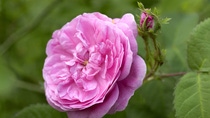
The scent of the rose:
doesn’t just seduce in Chanel’s Nº 5 perfume: Rose oil contains tannins and nurturing lipids that can reduce wrinkles.
In Syria, the scented Rosa damascena was hence processed by machine from as early as the mid-17th century.

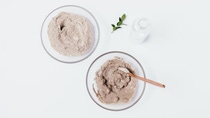
Beauty of the jungle:
Indigenous peoples in the Amazon rainforest have been using clay as a face mask for generations. It is rich in minerals and trace elements such as silica. These ingredients keep the skin elastic and firm.


Aloe vera:
is also known as gift from Venus. The mildly antibacterial and nourishing effect of its sap has been a hit for thousands of years – even Alexander the Great is said to have carried the liliaceous plant with him on his campaigns.
Without water
They are hard to miss on the shelves and in advertisements: body care and facial cleansing products or shampoos sold as solids requiring little packaging. Water free cosmetics are a resource friendly, natural cosmetics trend with great potential for the future. “This trend is here to stay,” the Australian beauty blogger Michelle Wong says confidently. However, something that is water free can still be liquid: Cosmetics manufacturers like Whamisa use floral waters or extracts in place of plain water. “Thanks to this concentrated formula, daily skin care requires much smaller quantities of the product,” Ryan Park says.
Water-free cosmetics – this trend is here to stay.
Even though water free cosmetics need less packaging, they cannot do without it entirely. After all, the contents have to stay clean and the compounds have to remain stable for a long time. To show responsibility for the environment, more and more manufacturers are using packaging with a high proportion of recycled material. Korean biocosmetics maker Whamisa uses, among other things, recyclable paper from sugarcane pulp and biodegradable oxo plastic tubes, as well as sealing caps made from recycled wood. The printing on the packaging is done with biodegradable soy ink.
Raw materials from nature, cultivated organically, water free, and packed in recyclable or biodegradable materials – this all soothes consumers’ ecological conscience for a start. However, keeping track of things is not simple. “If you really want to use your cream naturally and sustainably, you ultimately have to pay close attention,” the blogger Michelle Wong says.
